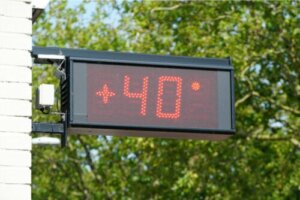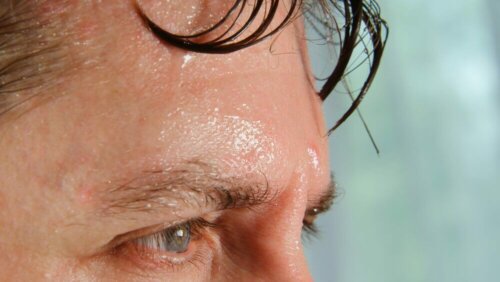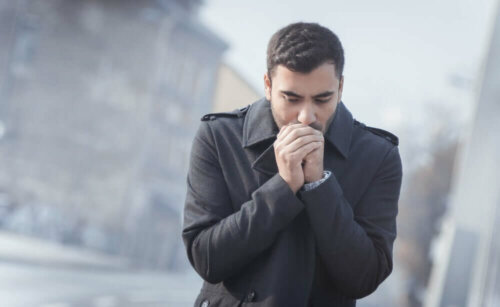How Extreme Temperatures Affect the Human Body


Written and verified by the doctor Diego Pereira
Exposure to extreme temperatures can lead to severe health consequences and even death. These climatic environments usually occur in temperate countries, especially during the winter and summer months.
The ideal body temperature is around 97 degrees Fahrenheit. Anything above 105 is hyperthermia and hypothermia is anything below 95. Extreme temperatures can lead to either state rather quickly.
Would you like to know a little more about the subject?
We’ve written today’s article in order to answer some common questions about it.
Can the body tolerate extreme temperature changes?
The human being has many biological mechanisms of thermoregulation. These are complemented by our conscious ability to create objects and clothing designed to prevent heat loss or gain, as the case may be.
The body has the ability to cope with adverse climatic situations thanks to the activity of many organs and systems, such as the cardiovascular and neurological systems.
For example, there’s heat evaporation in hot weather and so the blood vessels located on the surface of the body dilate to lose fluid in the form of sweat. The opposite occurs when it’s cold, blood flow distribution is directed towards the vital organs.
How does the body react to extreme heat?

This is an adverse climatic condition in which temperatures reached can have severe health consequences if sustained. Indeed, the temperature varies from region to region. This is why the adaptation mechanisms depend on the environment a person inhabits.
There’s extreme heat when the temperature remains about 10 degrees above the average upper limit for a given area. Of course, these conditions must be stable for a few weeks.
Symptoms of exposure to extreme temperatures and reactions
Some of the most important clinical manifestations during a heatwave are:
- Muscular and abdominal pain and headaches
- Profuse sweating
- Tiredness and fainting
- Nausea
- Increased heart rate
Know that many of these symptoms are the natural consequence of dehydration. Furthermore, go to your nearest ER as soon as possible if they occur.
Read about Pregnancy in Summer and How to Cope with High Temperatures
Ways to regulate and prevent it
Follow several recommendations to avoid any damage to your health when faced with the possibility of a heatwave. The most basic thing you can do is install an AC and fans, which may require an unexpected economic investment.
It’s also advisable to buy or manufacture deflectors if your place has many windows. You can easily create some with cardboard and aluminum foil.
Consuming plenty of water and wearing loose-fitting clothing are basic measures to maintain both inside and outside. Find public places with air conditioning or immediate medical assistance in case of any of the above symptoms if you must go out.
Risk groups
Both the elderly and children are more prone to medical complications from extreme temperatures. Also, people with chronic illnesses, especially those with cardiovascular and renal diseases, should take greater precautions.
How does the body react to extreme cold?

The definition of extreme cold is the opposite of extreme heat. It usually occurs in temperate climates and in the context of some winter storms.
Symptoms of exposure to extreme temperatures and reactions
The main clinical manifestations of dangerous exposure to extreme cold are:
- Chills and muscle cramps
- Tingling
- A decreased state of consciousness
- Change of coloration in the extremities
All of these symptoms, especially the last two, imply the need for evaluation at the nearest ER.
How to go about Protecting Children from Heatwaves: Warnings and Tips
Ways to regulate and prevent it
Just like what happens with heatwaves, you can prevent the negative effects of extreme cold in most cases. Just follow these recommendations:
- Don’t go out unless you really, really have to
- Keep the necessary tools to remove snow from the surroundings handy
- Wear several layers of clothing, including protection for hands, feet, ears, neck, and head
- Acquire and install a heating system well in advance
- Establish an emergency plan to go to a health center in case of an emergency
- Store enough canned food in case of power outages
Risk groups
Extreme age groups and people with chronic diseases are also more susceptible to the effects of a cold wave. People with reduced mobility should avoid leaving the house all the more because of possible obstacles caused by falling snow.
It never hurts to pay attention to extreme temperatures
Exposure to extreme temperatures claims thousands of lives every year – even more than natural disasters. Most developed countries with temperate climates have government strategies aimed at reducing deaths from this cause.
Call your local Red Cross in case of an emergency and consult a physician if you have any doubts about any of this.
All cited sources were thoroughly reviewed by our team to ensure their quality, reliability, currency, and validity. The bibliography of this article was considered reliable and of academic or scientific accuracy.
- Flouris, A. D. (January, 2011). Functional architecture of behavioral thermoregulation. European Journal of Applied Physiology, 111(1), 1-8.
- Johnson, J. M., & Kellogg, D. L. (2010). Local thermal control of the human cutaneous circulation. Journal of Applied Physiology, 109(4), 1229-1238.
- López A. Actualidad en termorregulación. Pensar en Movimiento 2014;12(2):1-36.
- Nakamura, K. (2011). Central circuitries for body temperature regulation and fever. American Journal of Physiology. Regulatory, Integrative and Comparative Physiology, 301(5), R1207-1228.
- Organización Panamericana de la Salud. Ola de calor y medidas a tomar – revisión preliminar. Biblioteca sede OPS.
- Schepers, R. J., & Ringkamp, M. (February, 2010). Thermoreceptors and thermosensitive afferents. Neuroscience and Biobehavioral Reviews, 34(2), 177-184.
- Gómez A. Trastornos de la temperatura corporal. Offarm. 2007; 26(7): 48-53.
- Soteras I, Subirats E, Reisten O. Hipotermia accidental. Medicina Clínica. 2011; 137 (4): 171-177.
- Synder M. Los aspectos más escalofriantes de la hipotermia. Nursing. 2006; 24 (1): 25-28.
This text is provided for informational purposes only and does not replace consultation with a professional. If in doubt, consult your specialist.








